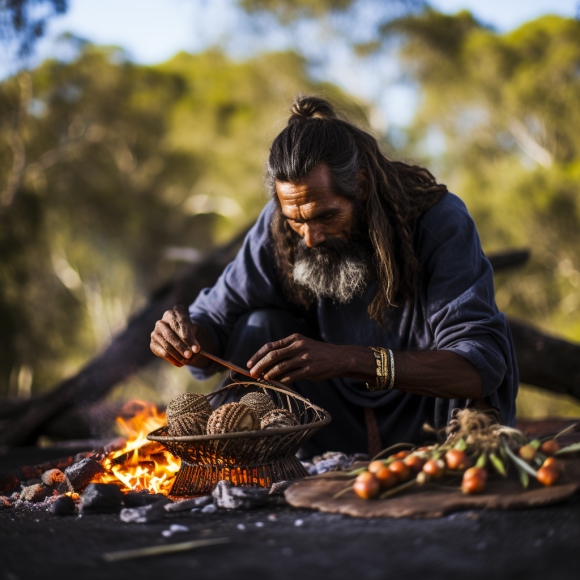Embark on a culinary journey through the ancient lands of Australia, where the flavors of Traditional Aboriginal Foods celebrate the rich cultural heritage and deep connection to the land. Indigenous Australian cuisine offers a diverse range of flavors, unique ingredients, and sustainable practices that have sustained Aboriginal communities for thousands of years. In this immersive article, we delve into the depths of Traditional Aboriginal Foods, exploring their significance, traditional dishes, and the cultural heritage that has shaped this culinary treasure.
Section 1: The Essence of Traditional Aboriginal Foods
We begin by unraveling the essence of Traditional Aboriginal Foods, rooted in the deep connection to the land and a sustainable approach to gathering and hunting. From the earthy flavors of bush tucker to the unique use of native plants and animals, Aboriginal cuisine celebrates the abundance of the Australian landscape. We explore the foundational elements that define Traditional Aboriginal Foods, such as native herbs and spices, bush fruits, kangaroo, emu, and seafood.
Section 2: Traditional Aboriginal Dishes and Cooking Techniques
Delve into the traditional dishes and cooking techniques that have sustained Aboriginal communities for generations. From the smoky flavors of kangaroo tail cooked in a ground oven to the damper (traditional bread) baked over open fire, we showcase the diverse and flavorful dishes that reflect the connection to the land and the wisdom passed down through generations. Explore the art of smoking, bush spice rubs, and the use of native plants in Aboriginal cooking.
Section 3: The Significance of Bush Tucker
Immerse yourself in the cultural significance of bush tucker, the traditional foods sourced from the Australian bush. We delve into the importance of bush tucker in Aboriginal culture, its connection to spiritual beliefs and ancestral connections. Explore the flavors of bush tomatoes, wattleseed, macadamia nuts, and the tartness of quandong. Discover the sustainable practices employed in gathering and preparing bush tucker.
Section 4: Aboriginal Seafood Traditions
Explore the rich seafood traditions of Aboriginal communities, who have relied on the bounties of the ocean for sustenance for thousands of years. We delve into the flavors of dishes like mud crab, barramundi, and Moreton Bay bugs, which showcase the diversity and delicacy of Australian seafood. Discover the traditional fishing techniques, cultural rituals, and sustainable practices associated with Aboriginal seafood traditions.
Section 5: The Healing Power of Native Plants
Delve into the healing properties and culinary uses of native Australian plants in Aboriginal cuisine. We explore the flavors and medicinal qualities of ingredients like lemon myrtle, bush mint, and finger lime. Discover the traditional knowledge and practices surrounding the use of native plants for their nutritional value and healing properties in Aboriginal communities.
Section 6: Contemporary Adaptations and Cultural Revival
Aboriginal cuisine continues to evolve with contemporary adaptations and the revival of Traditional Aboriginal Foods. We delve into the modern interpretations and creative approaches embraced by Indigenous chefs and restaurants. Discover the fusion of traditional Aboriginal flavors with contemporary techniques, the celebration of Indigenous ingredients in fine dining, and the growing recognition of Aboriginal culinary heritage.
Traditional Aboriginal Foods offer a window into the rich cultural heritage and sustainable practices of Australia’s First Nations. From traditional dishes to the significance of bush tucker and the healing power of native plants, Aboriginal cuisine invites us to appreciate the deep connection between culture, land, and food. As we conclude this culinary exploration, may the flavors of Traditional Aboriginal Foods continue to inspire and honor the legacy of Australia’s Indigenous communities.
